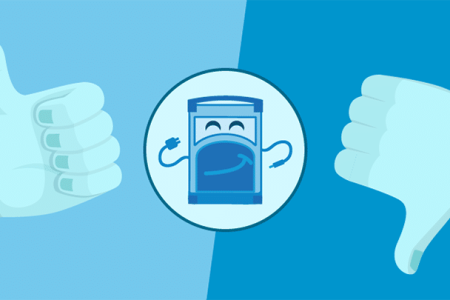Incentives can be a great way to fuel your referral program and convince customers to recommend your business to their friends and family. Here, we’ll take a look at the pros and cons of customer incentives. No business and customer is exactly alike. There are many things to consider when deciding how you want to incentivize your customers.
Option 1: Two-way incentives
As you learn about the pros and cons of customer incentives, you’re going to hear about two-way incentive programs. Referral programs with double incentives offer rewards to both the referrer and the person being referred. For example, an accountant could give a $100 discount to both the existing client and the new client when a referral leads to a new customer.
Pro: There will be a motivation for both parties to engage in your referral program. Logically, it will lead to the highest number of successful referrals. As both the referrer and the referred have something to gain.
Con: The business owner must feel comfortable with giving out multiple incentives.
Wrap-up: Two-way incentivized programs will likely lead to many successful referrals. These will often be the most effective in businesses with fewer customers and more money spent by each one–like attorneys and tax advisors, as opposed to a sandwich shop. They can be factored into your pricing and or coupons to have it make the most sense for your business
Option 2: One-way incentive to the referrer
Many referral programs offer incentives to just the customer making the referral – as opposed to the new customer they are leading to your business. For example, a small coffee shop could offer a free cup of coffee for every referral that leads to a sale.
Pro: Customers will be more motivated to recommend the business to a large number of people. If they can get ten free cups of coffee by convincing ten friends to come to the shop, then there’s more potential benefit for them.
Con: The referral itself can be devalued if friends know the referrer is being paid to recommend the business. To others, it may seem like the referrer is only recommending the business to receive the incentive, and would not otherwise be making the recommendation.
Wrap-up: This type of referral program works well for getting people to make numerous referrals, as it is in their self-interest to do so. However, these recommendations may not appear as genuine to the referrers’ friends and family.
Option 3: One-way incentive to the referred
In this case, the only person to receive the incentive is the new customer who was referred by an existing one. For example, a barber shop could offer half-off a haircut to new customers who were referred by previous customers.
Pro: Current customers will feel good about referring the business. Especially if they think that in doing so, they are helping out their friends. In addition, once the recommendation is made, friends will be more likely to give your business a chance, in order to receive the incentive.
Con: There is not as much motivation for your existing customers to refer their friends. As your referrers have nothing to directly gain for themselves, your program will need to rely on your customers either a) being highly enthusiastic about your business or b) really taking satisfaction in providing the reward to their friends.
Wrap-Up: Programs like this will likely lead to a smaller quantity of referrals made. But those recommendations have a higher chance of leading to a sale.
Option 4: No incentives
Some businesses are fully content without tying any incentives whatsoever into their referral programs. Sometimes it’s an issue with cost. Or the business owner is just against the idea of giving any discounts or rewards altogether. They instead hope that customers’ experiences with the business are so positive that they refer it on their own.
Pro: People are intrinsically motivated to refer to their friends, and those being referred will see the recommendation as genuine. As their friend is not receiving anything in return, this increases the authenticity of the recommendation.
Con: Many say they will refer, but it often never happens. Unless it comes up in a conversation, your customer has to go out of their way to refer you. If it requires more work for your customer to refer you, it lessens the chance of it happening.
Wrap-up: Non-incentivized referral programs produce the most genuine recommendations. But the majority of your customers will lack the motivation to actually refer your business to people they know.
Wrapping up the pros and cons of customer incentives
There is no ONE way to structure your referral incentives. Everything has its pros and cons. As a business owner, you have to feel comfortable with what type of promotion you want to run.
Which option has your business had the most success with?




